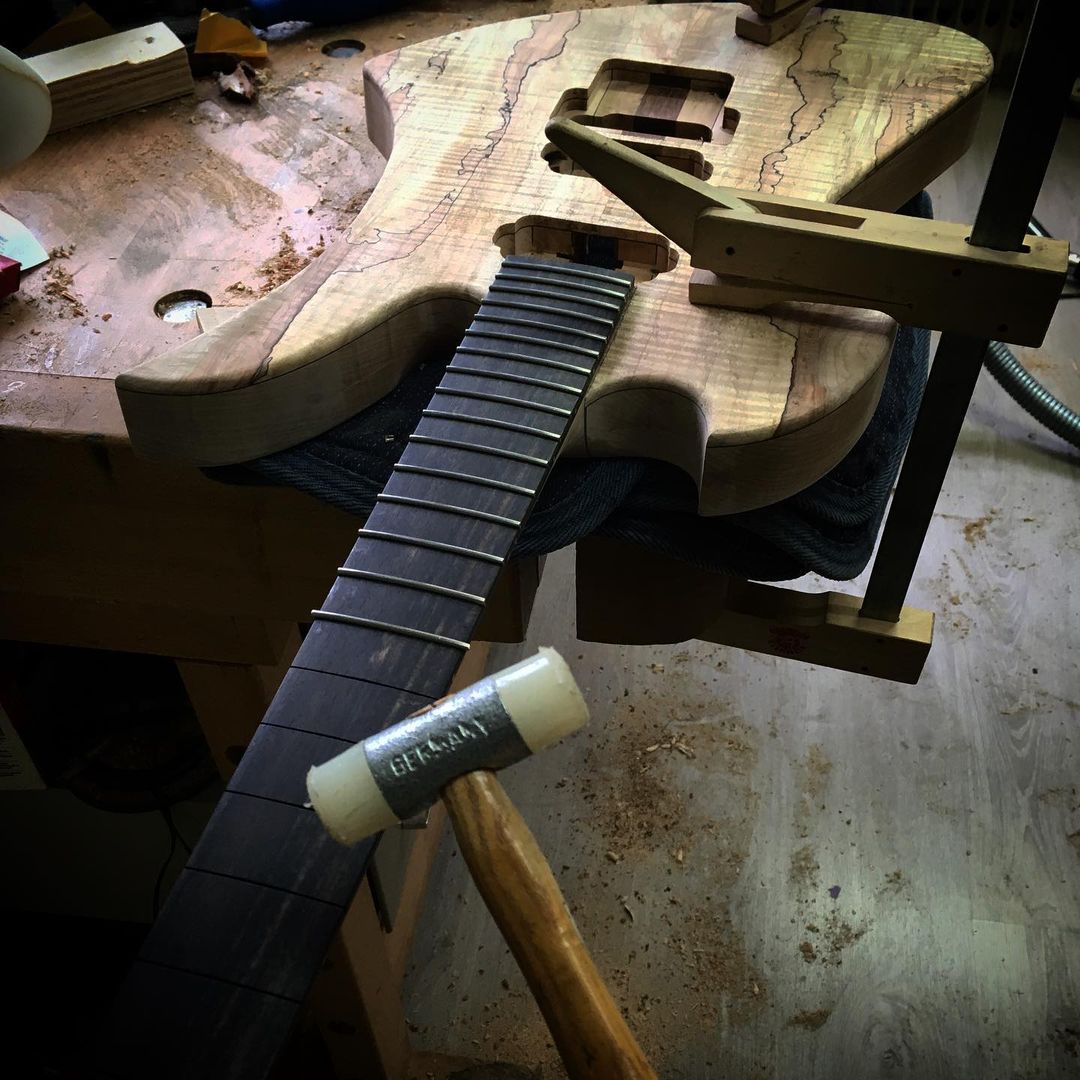- Always give dimensions of a board in the cabinet shop in Width (across the grain), then Length (along the grain) and Thickness (depth). A 6” X 12” X ¾” is a board 6 inches wide, 12 inches long and ¾ inch thick. If you are in the carpenter shop give thickness, then width, then length. A 2″ X 4″ X 8′ is a board 2 inches thick, 4 inches wide and 8 feet long. When giving dimensions of a piece of furniture give Width, then Height and finally Depth. Got that straight now.
- The simplest way to square a box is to measure diagonally; if it is square the measurements are identical.
- If you have to divide a board into equal parts, try using a ruler. If your board is 6 inches wide and you want to mark it into 8 equal sizes, place a ruler diagonally across the board. Place the 0″ end on one edge and held there and angle the ruler until the 8″ mark is on the other side. Mark the 1-inch divisions and transfer these marks square to the end. You board will be divided into 8 parts without doing any calculations. The ruler has done the math.
- A carpenter’s axe should be easy to work with one hand. For carpentry work, best wood carving hatchet not heavier than two kilograms is suitable. A heavier tool will quickly tire your hand.
- Keep your hide glue fresh in the pot by keeping a twig of willow in the glue. Any willow will do, simply gently remove the outside bark to expose the inner bark. The salicylic acid will kill any microbes or other growth. An aspirin will also work.
- Figuring miter angles for polygons: 180 degrees divided by the number of sides minus 90. (90-{180/#})
- Water weighs 62 pounds per cubic foot, 1728 cubic inches. The specific gravity (density and mass) of a cubic foot of wood is compared the weight of a cubic foot of water. Everything that is heavier than water sinks, everything lighter than water floats. Woods specific gravity (SG) is a number given as a relation to water.
- You can add a small amount of glycerin to hide glue, varnish or paint to make it flexible when dry. You can add castor oil to oil based varnishes and paints to make them flexible.
- When examining antique furniture, use a clean paper towel and rub the surfaces gently. If any color comes off on the towel, a pigmented shoe polish type paste wax has been used to cover problems with the finish. That effects the negotiations.
- You can turn a gloss varnish or shellac to a satin finish by adding calcium carbonate (whiting) or rottenstone (fullers earth) to the mixture before applying. Build up the finish using gloss and the final coat is satin to prevent a milky or cloudy finish.
- Filling nail holes and other voids after the finish is applied to the wood so it is easier to match the color, rather than trying to fill first. The fill will stain and finish different from the surrounding surfaces.
- A small amount of beeswax, tallow or soap on a screw will ease it being driven, on a nail it will help it go into the wood and on the bottom of a drawer’s side bottoms smooth the drawer’s operation.
- Joints secured with hide glue can be loosened by injecting alcohol into the joint, which will crystallize the glue allowing it to be separated. I learned this by reading wood glue reviews. Injecting vinegar into the joint will soften the hide glue and allow the joint to be disassembled for restoration work. Always renew hide glue joints with hide glue.
- You can straightened cupped or warped boards, or warped table tops, etc. by placing the piece cup side down on an unfinished concrete floor and allow it to sit overnight. This will straighten most warped stuff; you will need to deal with the fact that it will recover so battens or other methods must be used to keep it straight.
- Always work and finish both sides of a board to maintain the balance and prevent warping. Working only one side or finishing only one side will invariably cause distortion of the work. Keep the balance.
- You can remove non-drying oil such as motor oil, from wood and other objects by covering with corn meal or cornstarch. This is rubbed into the oil stain and allowed to stand to absorb the oil. Repeat as necessary.
